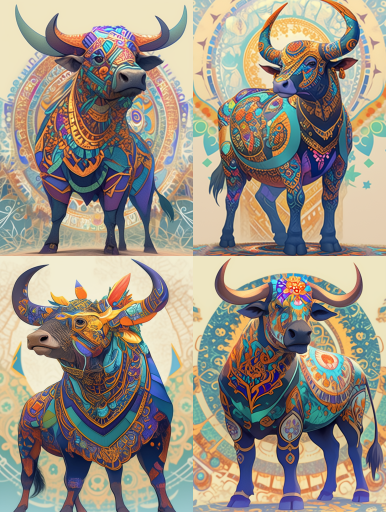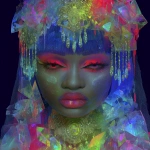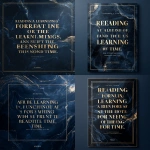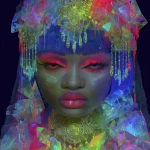Explore the Best AI Image Gallery

Immersive Realities: The Future of Gaming with VR and AR
In recent years, the integration of Virtual Reality (VR) and Augmented Reality (AR) into the gaming industry has revolutionized the player experience, offering unprecedented levels of immersion and creativity. While traditional gaming has its merits, the advanced technologies of VR and AR open up a plethora of opportunities that not only elevate the gaming experience but also have far-reaching implications in the creative industry.
The Transformation of Gameplay
VR transports players into fully immersive virtual environments, allowing them to experience games as if they were part of an entirely new world. Players can physically move, interact, and manipulate their surroundings, which enhances the emotional investment in gameplay. Some popular VR games include titles like Half-Life: Alyx and Beat Saber, which demonstrate just how immersive and engaging VR can be.
On the other hand, AR enhances the real world by overlaying digital elements onto physical environments. Popular games like Pokémon GO exemplify this trend, encouraging players to explore their surroundings while interacting with digital creatures. The blend of the real and virtual worlds creates unique gameplay experiences that stimulate both the mind and body.
Impact on the Creative Industry
The influence of VR and AR extends beyond just gaming. In the creative industry, these technologies expand the boundaries of storytelling and artistic expression. Artists and designers are utilizing VR and AR to create interactive experiences that engage audiences in ways traditional media cannot. For example:
- Virtual Exhibitions: Museums and galleries are using VR to offer virtual tours and immersive exhibitions, allowing viewers from anywhere in the world to experience art.
- Collaborative Spaces: Designers can create and manipulate 3D models within a virtual space, encouraging collaboration and innovation, free from physical limitations.
- Interactive Storytelling: Writers and filmmakers can employ VR to create immersive narratives where the audience feels part of the story.
Potential Uses Outside Gaming
The applications of VR and AR technologies extend far beyond entertainment. Here are some potential uses:
- Education: VR can deliver experiential learning, enabling students to explore historical events or scientific concepts in immersive settings. For example, a virtual field trip to ancient Rome could provide a richer understanding than a textbook.
- Healthcare: VR and AR are making waves in medical training and therapy. Surgeons can practice complex procedures in a virtual environment, reducing risks when they operate on real patients.
- Architecture and Design: Architects can create detailed walkthroughs of their designs, allowing clients to visualize finished projects before construction begins.
Ethical Considerations
As the technology advances, so too do the ethical considerations surrounding its use. Privacy and security become critical issues, especially with AR applications that collect data from users' environments. Furthermore:
- Exposure to Violence: VR games may amplify the effects of violent content due to immersive experiences, raising questions about their impact on behavior.
- Accessibility: The high costs associated with VR setup and gaming can create inequalities, leaving behind those who cannot afford it.
Future Trends
The future of VR and AR in gaming and beyond appears bright. Several trends are shaping the landscape:
- Advances in Technology: As hardware becomes more affordable and accessible, a broader audience will engage with these technologies.
- Cross-platform Integration: Expect to see games that combine elements from both VR and AR, providing users with diverse experiences.
- Social Gaming: Multiplayer experiences in virtual spaces are on the rise, enabling friends to interact in shared virtual environments.
As we move forward, the collaboration between game developers, artists, and technologists will foster innovations that can redefine our understanding of entertainment and creativity. The potential of VR and AR is limitless, and their integration into the gaming industry is just the beginning of a thrilling evolutionary period in how we play, create, and experience the world around us.








](https://images.ai-img.art/thumbnails/150/6c909fd6d38caac6572b592dd97831deb7d6562bba142798574677582676dfc1.webp)




](https://images.ai-img.art/thumbnails/150/e6a179db327f0374ec327d0fdab48ac1f2dc47123eed103b0a41ed346280d07d.webp)


](https://images.ai-img.art/thumbnails/150/26c16e4f635deee86633de398088ca98d9bb748d6e7601436b07e882fab236cb.webp)



](https://images.ai-img.art/thumbnails/150/655229c40961cb7ff5abd4b4190e02c94ea1a961106e7547a562649c945268be.webp)




](https://images.ai-img.art/thumbnails/150/184b4b030e30be0a6d51b544226cb4cf2271977814d935d3aaa2b7529355b3b7.webp)



](https://images.ai-img.art/thumbnails/150/60973df1d727dbbf8e6922b7e4836814ab6012106eb9dcfe99aea7aec15f3710.webp)





](https://images.ai-img.art/thumbnails/150/1202074d0d60b08b64d0f91f36468608aaac200a02b721cc8e6d8ec8a908432c.webp)













